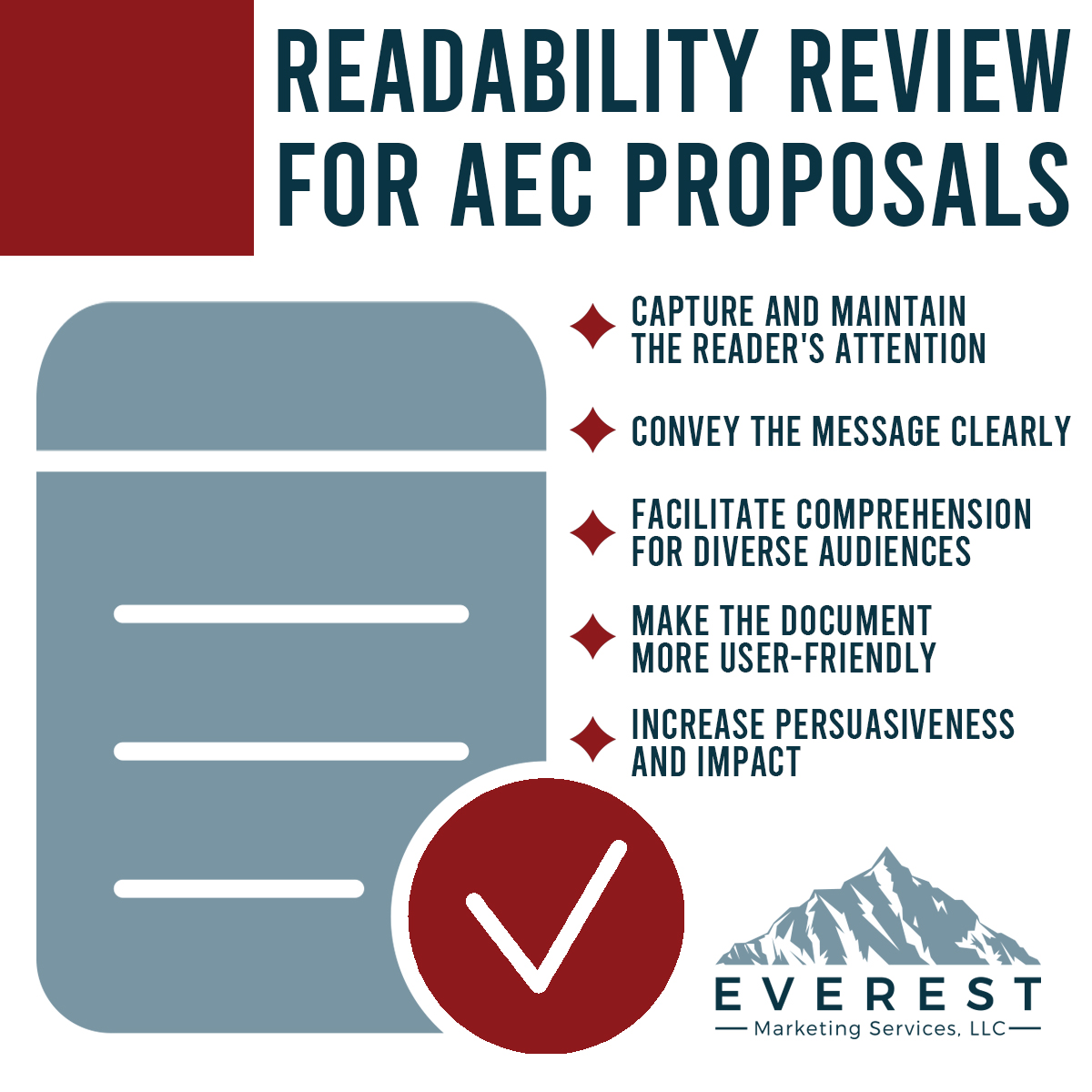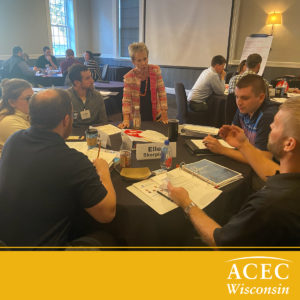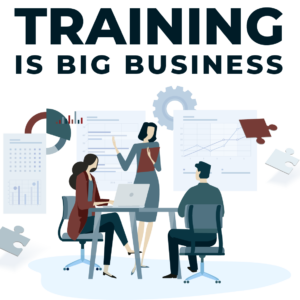A request for proposal just landed on your desk. What’s the first thing you look for? Deadline? Client? Scope of work? Your team’s current workload? Project budget or schedule? Page limit? Which team member dropped the RFP in your inbox? (Made you think, didn’t I?)
You make the “Go” decision, kick-off the proposal, make writing assignments, and create the template. You gather and drop in boilerplate. Then technical content starts trickling in. It’s time to review responses for compliance and readability. (Of course, some must be edited for space limitations.)
Flow. Single voice. Compliance. Persuasion. Differentiation.
When clients struggle to understand your response, you’re putting your project win and your brand/reputation at risk. Readability is crucial to blending content into a winning proposal.
Make readability review part of your proposal writing process:
- Capture and maintain the reader’s attention. Proposals are lengthy documents that require careful attention from the reader. If the proposal is poorly structured, overly complex, or difficult to read, it can quickly lose the reader’s interest. Readability ensures the proposal is engaging, easy to follow, and holds the reader’s attention throughout. Ask: “Is this long-winded or hard-hitting?”
- Convey the message clearly. Proposals communicate ideas, solutions, and recommendations effectively. Readability ensures that the content is presented in a clear and understandable manner, allowing the reader to grasp the key points and arguments without confusion. Clear communication enhances the proposal’s persuasiveness and increases the chances of higher scores. Ask: “Is this easy for a non-technical person to understand?” Ask: “Is this skimmable so the reader doesn’t have to wade through?”
- Facilitate comprehension for diverse audiences: Proposals target diverse audiences, including stakeholders, decision-makers, and subject matter experts. Readability considers the needs and knowledge levels of these different readers. Use plain language, avoid jargon, and provide clear explanations to ensure the proposal is accessible to all readers, regardless of their expertise. Ask: “Is this easy for a non-technical person to understand?”
- Make the document more user-friendly. Readability improves the document’s structure, organization, and formatting. Well-structured proposals with headings, subheadings, bullet points, and proper use of white space are easier to navigate and understand. Readability enhances the document’s user-friendliness and enables readers to locate specific information quickly and review the proposal more efficiently. Look for white space, key messages that stand out, captions that explain the graphic, and diagrams that are easy to understand.
- Increase persuasiveness and impact. A readable proposal is more likely to persuade the reader and make a strong impact (i.e. shortlist or win). When content is presented in a logical, concise, and compelling manner, it becomes easier for the reader to see the value and benefits of the proposal. Readability creates a positive impression and increases the likelihood of selection. Ask “So what?” and make sure your content clearly conveys the answer (client benefit).
Focus on readability to better engage readers,
convey ideas clearly, and increase the chances of a project win.
I love to help AEC professionals improve readability.
Call me at 602.686.4616 or email me at barbara@everestmarketingservices.com.
I promise to make it easy to up your readability game!
Most professionals have adequate technical skills to perform their jobs. Communication skills are the hardest to master. I provide training that blends a veteran’s insights, communication best practices, and practical application to set the stage for professional satisfaction and career growth.





